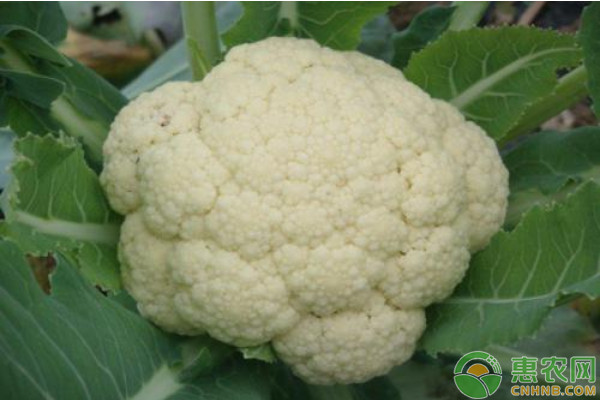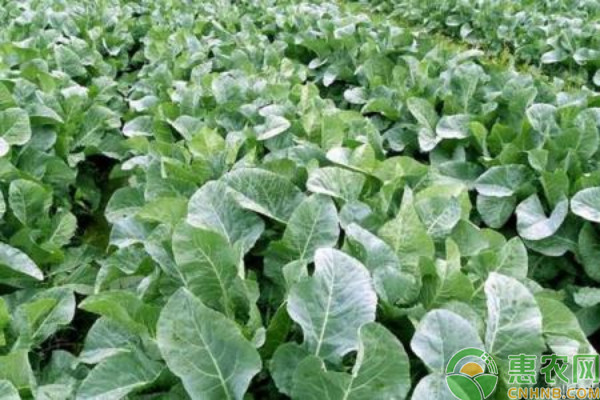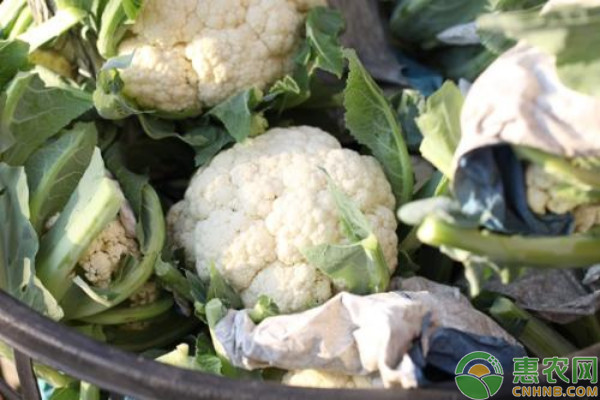How is broccoli grown? The following is a detailed technical description from the production environment, pre-emergence preparation, seedling raising, pre-plant preparation, planting, field management, pest control and harvesting, in order to meet the technical needs of green broccoli production and help to improve green food production. Level. 1 Origin environment It should meet the requirements of NY/T 391. The land should be selected from deep loam, well drained, loose and breathable loam or sandy loam. 2 Preparation before nursery Choose varieties that are resistant to disease, stress, and high in yield and quality. When planting in spring, it is advisable to choose the varieties of short-stem stalks of the stalks, such as Takayama 65, Nongmei 68, Easily 65, and compact flower balls, such as Xuemei, Xuefei, and Huacai. When planting in autumn, it is advisable to choose the varieties of green stalked cauliflowers with long growing season, such as Takayama 85, Takayama 80, Meiquansong, and compact flower balls, such as Yunna, Huanai 75, and Pagoda. The seed quality meets the above criteria of GB/T16715.4. Do not use genetically modified varieties. 2.2 Pallet preparation 2.2.1 Nutrient soil preparation You can choose one of the following methods: (1) 60% of the fertile soil of the non-cruciferous plant, 30% of the fully decomposed high-quality organic fertilizer, 10% of the fine furnace or sawdust, uniformly mixed and sieved, and evenly stirred. (2) 70% of the fertile soil of the non-cruciferous plant, 30% of the fully decomposed organic fertilizer, and evenly sieved. For each cubic meter of the above nutrient soil, compound fertilizer (17-17-17) can be added in an amount of 0.5 to 1.0 kg (dissolved in water). You can also choose to purchase the prepared substrate and use it directly. 2.2.2 Disinfection of nutrient soil Each cubic meter of nutrient soil was mixed with 50% carbendazim powder 80 g and 50% phoxim emulsifiable concentrate 1 000 times in a nutrient soil, and sterilized and sterilized for 7 days. Or mix 53% mancozeb 40 g and 2.5% fludioxon 200 mL per cubic meter of nutrient soil, spray and mix, and sieve for use. 2.2.3 Use of nutrient soil When the seedlings are nursed, the nutrient soil is directly loaded into the plug tray, and 72 holes are selected for the trays. The soil loading is filled with the virtual soil to the level with the orifice, and then the trays are placed in the nursery. 2.2.4 Disinfection of nursery sheds and nursery equipment (1) Disinfection of nursery sheds: 7 to 10 days before seedlings, sulphur powder 3 to 4 kg per 667 m2 shed, mix with sawdust, pile up and ignite, then close the shed for a day and night, then release the wind, when the shed is tasteless Seeding the seedlings again. (2) Disinfection of seedling equipment: spray or soak with 0.1%-0.2% peracetic acid, cover the film for 1 min; or spray or soak with 0.05%-0.10% potassium permanganate for 4 h, then rinse with water clean. The new tray can be removed from this step. 3 nursery 3.1.1 Sowing time Plastic greenhouses are cultivated in advance in spring, mid-late December - mid-January sowing; spring open field cultivation, mid-January to mid-February sowing; plastic greenhouses are cultivated in autumn, late in mid-June - mid-July; early autumn Cultivation, planting from late June to early July. 3.1.2 Seeding rate Facilities cultivation, 12 to 16 g per 667 m2; open field cultivation, 15 to 17 g per 667 m2. 3.1.3 Seeding method The tray is watered, and one seed is spotted in each hole of the tray, and the seed is laid flat, covering the nutrient soil of 0.8-1.0 cm. After sowing, the membrane was covered on the plug, and after 70% of the seeds were emerged, the film was removed. 3.2 Seedling management 3.2.1 Temperature management After sowing to emergence, keep the daytime temperature 20 ~ 25 °C, nighttime temperature 15 ~ 13 °C; after the seedlings, daytime temperature 15 ~ 20 °C, night temperature 12 ~ 10 °C; after the first true leaf unfolding, daytime temperature 20 °C 10~8 °C at night; refining in the first half of the planting period, the temperature is consistent with the cultivation environment. The facility cultivates summer and autumn seedlings, and needs to be shaded during the nursery period, and humidified and cooled. 3.2.2 Water and fertilizer management Replenish water in time after emergence. When fertilization is not carried out during the seedling period, when there is a phenomenon of de-fertilization, 0.2% potassium dihydrogen phosphate may be appropriately sprayed. 3.2.3 Humidity Management The relative humidity of the air before emergence is maintained at 90% or more, and the relative humidity of the air after emergence is maintained at 70% to 80%. 3.3 strong seedling standards The seedling height is 10~12 cm, 5 leaves and 1 heart, the leaves are dark green, the leaves are thick, the stems are thicker than 0.4 cm, the internodes are short, the roots are developed and complete, and there are no pests and diseases. The seedling age of summer and autumn is 20 to 30 days, and the seedling age of winter and spring is 35 to 40 days. 4 Preparation before planting Performed in accordance with NY/T 394. Choose a non-cruciferous vegetable plot before and after. For every 667 m2, use 4 000 to 5 000 kg of decomposed organic fertilizer, 25 to 30 kg of compound fertilizer (17-17-17) and 1 kg of boron fertilizer. When the open field is produced, the front hoe will be turned over in time after harvesting; the production of the protected land needs to be completed 20 days in advance, with a depth of 25-30 cm. The open field cultivation is flat, and the width is 1.2 m. The facility is cultivated with a semi-high raft, with a width of 1 m and a height of 10 cm. 4.2 Early lifting of the shed Buckle shed 15 to 20 days before planting. The ground temperature of 10 cm before planting reaches 6 °C and can be colonized above. 4.3 shed disinfection The shed disinfection is carried out 5 to 7 days before planting, and the method is disinfected with the nursery shed (2.2.4). 4.4 Watering Facility cultivation, watering 5~7 days before planting; open field cultivation, watering for 2~3 days before planting. Wait for the water to seep, and make a platform before planting. 5 colonization Plastic greenhouses are cultivated in advance in spring, planted in the middle and late January to late February; spring open field cultivation, planting from mid-March to early April; plastic greenhouse cultivation after autumn extension, mid-July-August-August mid-August planting; autumn open field cultivation , planted in late July - early August. 5.2 Planting density Plant cultivation, planting 1,700-2,200 plants per 667 m2; in open field cultivation, planting 2,000-2,700 plants per 667 m2. 5.3 Colonization method Planting should be carried out on sunny days in the morning. Ditching and seedlings are placed on the well-prepared sorghum. The surface of the nursery is kept level with the surface of the nursery when it is sealed, and then the water is planted. It is cultivated in the early spring, and the mulch is covered with mulch film. 6 Field management 6.1.1 Temperature Management Facility cultivation, from colonization to slow seedling, daytime temperature control at 20 ~ 25 °C, night control at 15 ~ 12 °C. The facility cultivation is insulated by covering the grass hoe and the small arch shed, and the shading net is added to cool down in summer and autumn. After the slow seedling, the daytime temperature is maintained at 15-20 °C, and at night it is 12-10 °C. 6.1.2 Water management (1) Facility cultivation, watering the seedlings water 7 to 10 days after planting, and timely tillage after seeing the dried noodles. (2) Open field cultivation, spring cultivation, filming after planting, no cultivation in autumn, pouring water once in the ditch, and then pouring water once every 5-7 days. On the 7th day after planting in spring, the seedlings were perforated and ventilated, and the orifices were gradually enlarged to prevent seedlings from burning. When the seedlings were adapted to the outside temperature, the soil was sealed. 6.2.1 Temperature management During the cultivation of the facility, the daytime temperature is maintained at 15 to 20 °C, and the nighttime temperature is 8 to 10 °C. 6.2.2 Fertilizer management Facility cultivation is the same as open field cultivation management. Cultivation in spring, seedlings 10 to 15 d, when the soil is dry, can be watered in moderation; autumn cultivation, no seedlings, fertilizer and water rush, promote early flowering. When the young leaves of the plant start to be screwed (when the ridge is closed), combined with watering, 15 kg of compound fertilizer (18-6-24) is applied every 667 m2, and then watered once every 7 days. 6.3 flower ball formation period 6.3.1 Temperature Management In the facility cultivation, the daytime temperature is maintained at 15 to 20 °C, and the nighttime temperature is 12 to 10 °C. 6.3.2 Fertilizer management Facility cultivation is the same as open field cultivation management. When the flower ball is formed at the beginning, water is poured in time, 15 kg of compound fertilizer (18-6-24) is applied per 667 m2, and 0.2%-0.5% borax is sprayed on the foliar surface. Watering is repeated once every 10 to 15 days, and watering is stopped 5 days before harvesting. 6.3.3 Plant Management Facility cultivation is the same as open field cultivation management. When the flower ball grows to a diameter of 8 to 10 cm, the leaf or the leaf bundle covers the flower ball. 7 Pest Control In accordance with the guidelines of “prevention first, comprehensive preventionâ€, we adhere to the principle of harmless prevention with agricultural control, biological control and physical control as the mainstay, supplemented by chemical prevention and control. Pesticide use guidelines should be in accordance with NY/T 393. 7.2 Agricultural control Choose resistant varieties and carry out two-year rotation with non-cruciferous crops. The disease-free new soil is selected as the seedbed, and the plots with high ground and well-drained plots are selected for seedlings and drained in time after rain. Strengthen seedling management to avoid low temperature and high humidity. Deeply turn and clean the soil before planting. Add base fertilizer, pay attention to the combination of NPK fertilizer. It is cultivated by ridge or deep sorghum. Timely clearing weeds and residual diseased leaves in the field, controlling pests, reducing wounds and preventing the invasion of germs. When the flower ball grows to the size of the fist, properly control the watering, and apply the plant ash, potassium fertilizer, and the like. 7.3 Physical control 7.3.1 Seed disinfection Soak seeds with 50 °C warm water for 20 min before sowing; or soak seeds with 72% agricultural streptomycin sulfate soluble powder for 1 h, pick up and dry them, and sow them. 7.3.2 Sticky board Hang a 25 cm × 30 cm sticky worm plate every 20 m2, and the sticky worm plate is 20 cm above the broccoli, which can trap aphids and whitefly. 7.3.3 insect net At the exit and vent of the facility, an insect net of 0.45 mm aperture is used to repel pests. 7.4 Biological control The field uses sex attractants to trap adults. 7.5 Chemical control 7.5.1 Diseases Tripping disease: In the seedling stage, immediately remove the diseased plant, and spray 25% metalaxyl WP 800 times solution, or 90% aluminum triethyl phosphide wettable powder (100 ~ 120 g per 667 m2), or 72.2 % of the mildew water-repellent agent (80-100 g per 667 m2) is sprayed. Black spot: before or at the onset of the disease, you can choose 70% mancozeb WP 400-500 times solution, or 50% Isocarburon WP 1500 times, or 80% mancozeb wettability Powder 600 times liquid, or 50% procymidone WP 2,000 times liquid spray control. Black rot: Spray 6% spring serotonin WP (20-30 g per 667 m2) at the beginning of the disease, spray once every 6-7 days, even spray 2~3 times; or use 72% agricultural streptomycin 4 000 times liquid, or 30% basic copper sulfate suspension 350 times liquid spray control, spray once every 7 d, 2 to 3 times in a row. Soft rot: It can be sprayed with 20% thiabonyone suspension 500 times solution or 72% agricultural streptomycin sulfate soluble powder 3 500 times. Downy mildew: After planting, use 80% mancozeb WP 600 times solution, or 70% Daisen water dispersion granule 500 times solution, or 40% aluminum triethyl silicate wettable powder 150~200 times spray Prevention and treatment. 7.5.2 Pests Pieris rapae: Spray 5% natural pyrethrin emulsifiable concentrate, 40-50 g per 667 m2; or 0.3% azadirachtin emulsifiable concentrate, 40-60 g per 667 m2; or 4 000 IU/μL suspension of Bacillus thuringiensis 3 000 ~ 3 500 times liquid spray. Aphids, whitefly: spray 10% imidacloprid wettable powder 1 000 ~ 2 000 times liquid, or spray 25% thiamethoxam wettable powder, 2 ~ 3 g per 667 m2. 8 harvesting Tightening the variety of flower balls, starting to harvest when the flower ball is fully grown and not yet loose; the variety of loose ball balls is harvested when the flower ball is long enough to be loose. It is better to keep 4 to 5 leaves of the flower ball when harvesting. The above is all the main points of broccoli production technology, I hope to help the vegetable farmers who have grown broccoli, more exciting planting technology in the mobile phone Huonong APP! Laboratory Diagnostic,Reagent Strips For Urinalysis,Assay Kits,LETIA Assay Kit,Urinalysis Assay Kits Jilin Sinoscience Technology Co. LTD , https://www.contoryinstruments.com
2.1 variety selection
3.1 sowing 
4.1 Soil preparation and fertilization
5.1 colonization time
6.1 slow seedling period 
6.2 Rose period
7.1 Principles of Prevention